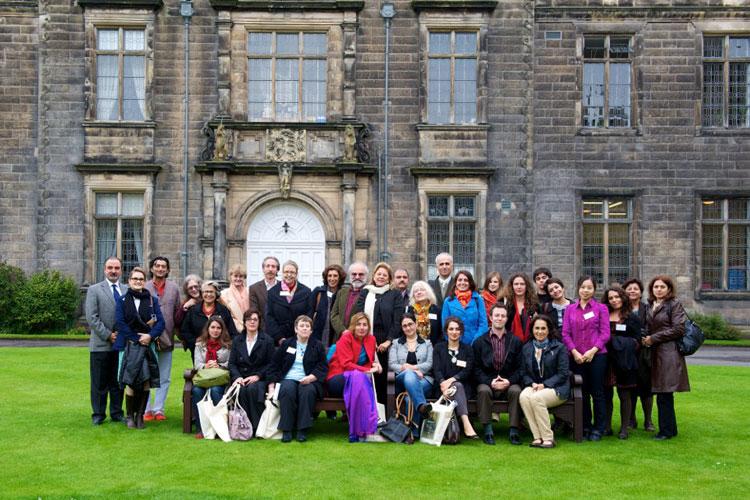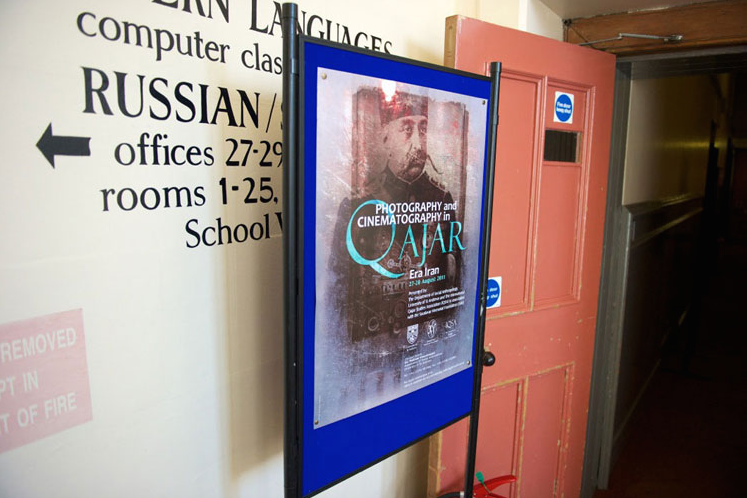Photography and Cinematography in Qajar Era Iran



n memory of Farrokh Ghaffari (1921-2006), the Soudavar Memorial Foundation sponsored the availability of a special grant for archival research on Qajar cinematography in preparation for this symposium. In recent years there have been important academic debates among social and visual anthropologists comparing the value of and differences between the use of text, still photography and film in the discipline. Generally speaking, if anthropologists have tended to be unenthusiastic about film, visual anthropologists have been relatively unenthusiastic about still photography. While Hastrup argues that film occupies an intermediary position between the photograph and the written text in terms of ‘flexibility’, Pinney posits that most visual anthropologists have avoided the photograph because it offers too much meaning (Hastrup and Pinney). Pinney believes film uses movement and sequence to limit and direct the viewer’s search for meaning, whereas the still image offers the viewer almost total freedom to follow up or, perhaps better, ‘construct’ any number of meanings from those potentially contained within it (Crawford & Turton 1995: 4).
In reality, the scope of visual anthropology would be significantly diminished without photography, and the research functions that it affords, for methodologically the camera has made visual analyses a possibility for the behavioral sciences. But while the still camera has explored areas of nonverbal communication perhaps for the first time, we should accept that the moving picture camera has been able to integrate this language fluently. ‘Because of this interlocking development, it is shallow to review still camera research without also considering the blossoming that took place when the still image began to MOVE’ (Collier 2003: 211).
In Iran, the history of photography and cinematography is mired with doubts and ambiguities. The first photographic apparatuses were given to the Iranian Qajar (1794-1925) monarch, Muhammad Shah (1808–1848), somewhere between 1839 and 1842, by the two colonial powers in Iran – England and Russia (Behdad 2011). Also, cinematography was introduced for the first time to another Qajar monarch, Mozaffar al-Din Shah (1853–1907), some time between 1899 and 1900 (Adle 2001). Taking this into account, it is clear that the Qajar kings were in great part responsible for the birth of photography and cinematography in Iran, and also that the development of these technologies was influenced by the personal tastes of these monarchs.
Whilst academic debates have focused on Qajar photography and cinematography from the viewpoint of historical analyses and technical aspects, there does not appear to be any anthropological, and particularly, visual anthropological research on these two important visual mediums. As a result of this simple but crucial observation, our aim is to encourage and invite scholars who are working in fields such as visual anthropology, ethnographical film, media and visual studies, and whose interests coincide with this symposium’s, to present their work.
This two-day symposium and film season discussed and developed ideas deriving from social and visual anthropological research and debated the diverse types and aspects of photography and cinematography of the Qajar era in Iran, and not exclusively through monarchic art. It was convened by Professor Manouchehr Eskandari-Qajar of Santa Barbara City College and Dr Pedram Khosronejad of the University of St Andrews.
Farrokh Ghaffari was an Iranian film director, actor, critic and author. Along with Ebrahim Golestan and Fereydoun Rahnema, he was one of the founders of Iran’s New Wave film movement.[1] By establishing the first National Iranian Film Society in 1949 at the Iran Bastan Museum and organising the first ‘Film Week’ during which English films were exhibited, Ghaffari is widely recognised as laying the foundations for alternative and non-commercial films in Iran.



